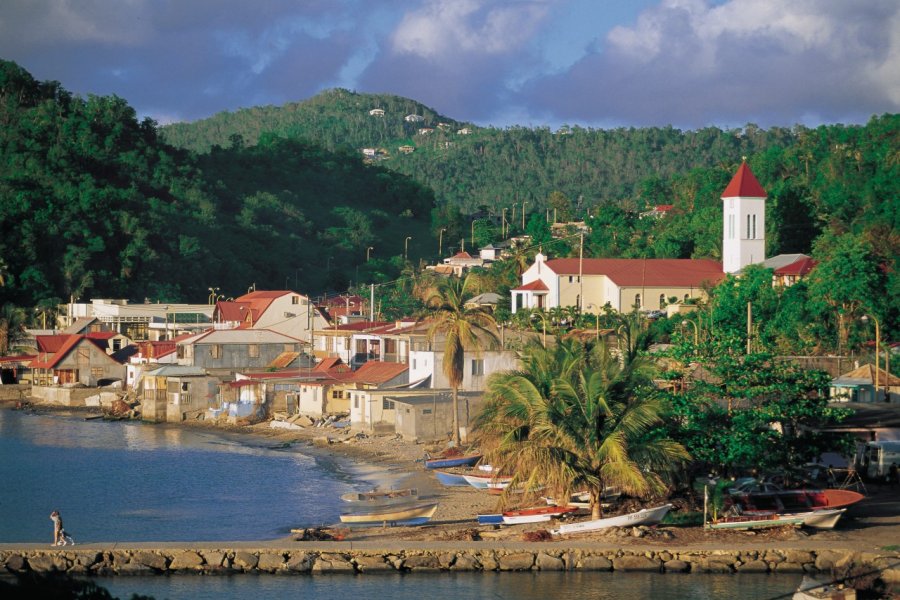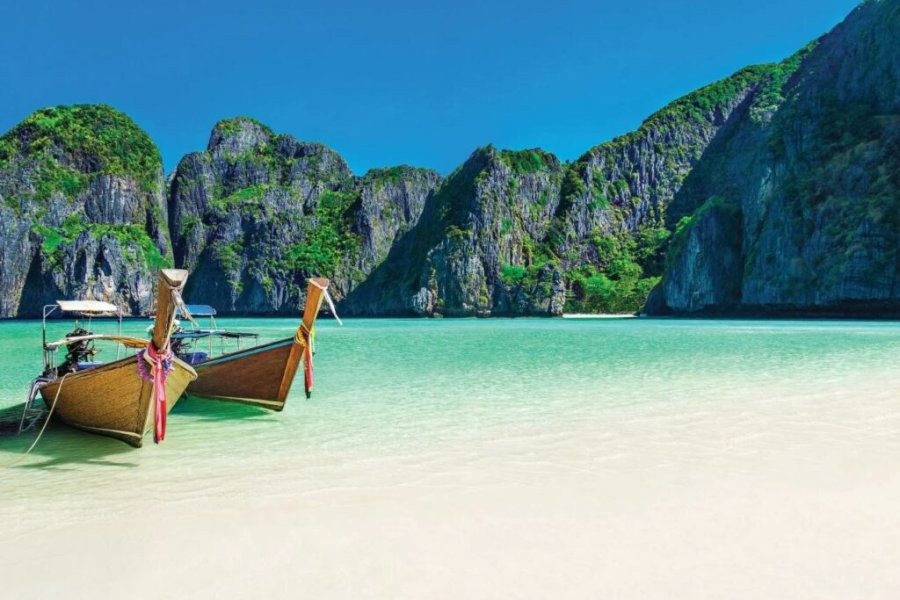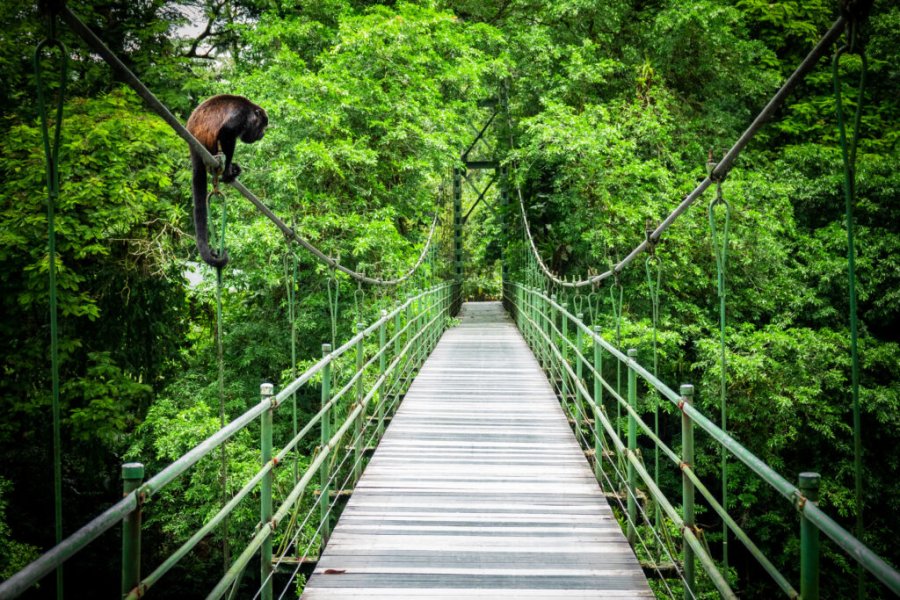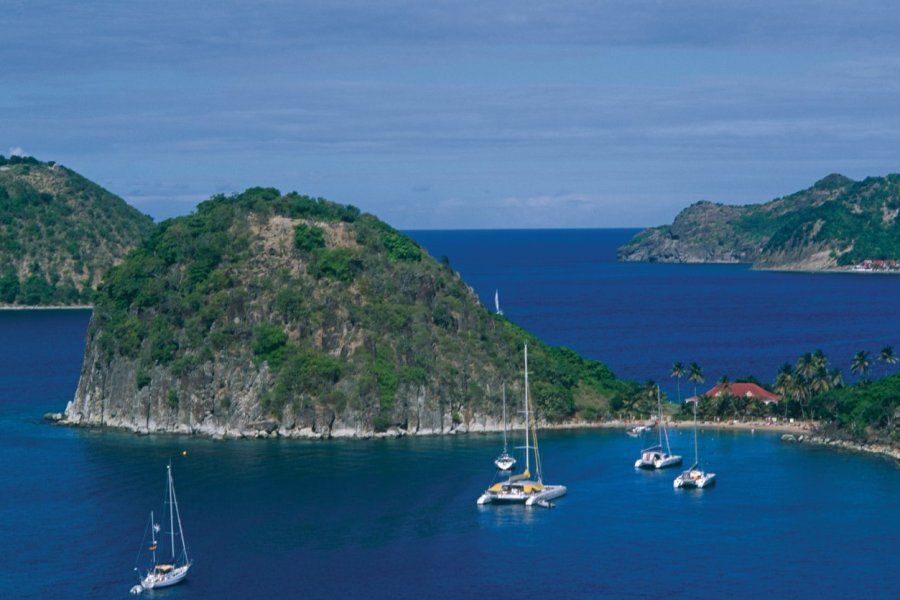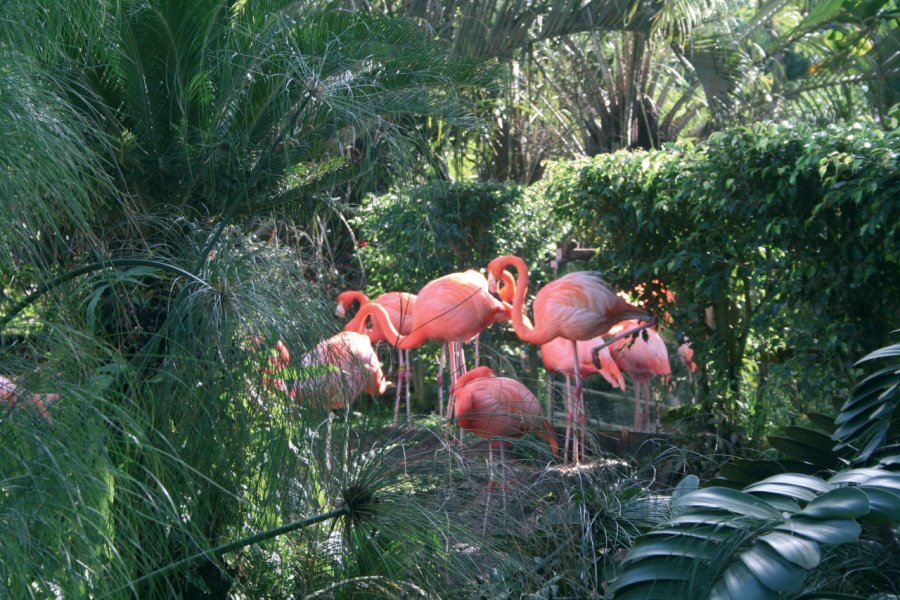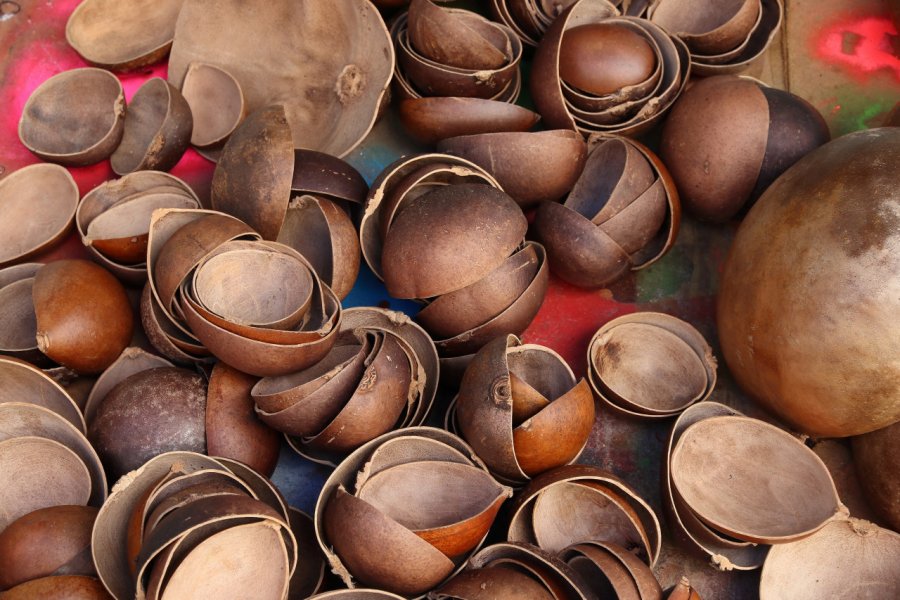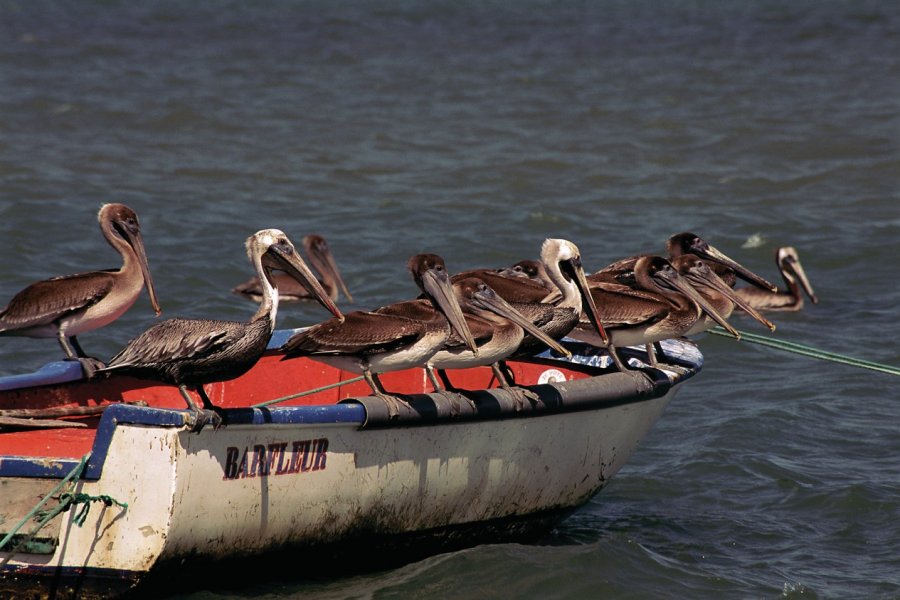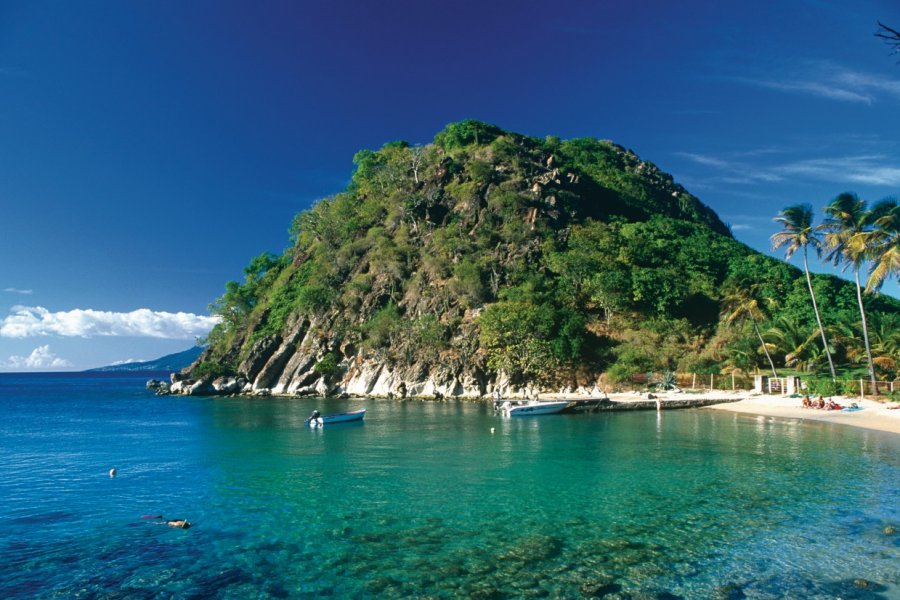Travel guide Guadeloupe
Guadeloupe spreads its tropical butterfly wings with shimmering colors, declining the blue and green expanses punctuated by the sinuous lines of white beaches... This is the setting as soon as you arrive at Pointe-à-Pitre airport! French overseas territory, Guadeloupe is an archipelago of the West Indies located in the southern Caribbean Sea. Its two largest islands, Basse-Terre and Grande-Terre, separated by the Salt River, each evoke a butterfly's wing, hence the archipelago's nickname. The hilly island of Grande-Terre has long beaches and vast fields of sugar cane from which rum is produced. On the island of Basse-Terre, nature lovers enjoy visiting the Guadeloupe National Park with its Carbet Falls and the Grande Soufrière volcano. Then there are the small islands of Marie-Galante, Désirade and Saintes. Guadeloupe invites you to enjoy the seaside, to discover the natural land and sea treasures such as the Cousteau reserve, but also to a traditional culture rich in colors. For the history of Guadeloupe, its folklore and its delicious cuisine, consult your Guadeloupe guide.
What to see, what to do Guadeloupe?
-
Book an activity
-
Customized travel
- The most beautiful cities Guadeloupe
When to go Guadeloupe ?
The period from December to April is the most popular, and therefore most expensive, high tourist season, when reservations must be made well in advance. The end-of-year holiday season is accompanied by a peak in both attendance and fares. Between April and November, the number of visitors decreases and so do the prices. It's the low season. The summer months (July and August) are a special time in the West Indies. It is the summer holidays and the West Indies of the metropolis return home, the Martiniquans come on holiday to Guadeloupe and vice versa, which makes it an intermediate season. The prices of tourist services, car rentals are rising slightly and airline tickets are expensive, even very expensive, at least if you do it at the last minute. And if you plan your stay between June and September, you will have the added bonus of attending a very festive, popular and colourful parish festival every Sunday.
Suggested addresses Guadeloupe
Travel Guadeloupe
-
Find a hotel
-
Car Rental
-
International e-SIM package
-
Find a local agency
By choosing Guadeloupe as your destination, you will have the opportunity to multiply your experiences as you explore while remaining on French territory. After about 8 hours of flight from Paris and a time difference of 5 or 6 hours depending on the season, a change of scenery is offered to you wherever you stay. Plan your activities taking into account the distances you will have to cover, as the 1,436 km2 that make up mainland Guadeloupe (1,702 km2 for the whole archipelago) are full of natural or heritage sites and museums. It is now up to you to set your priorities according to your expectations and the length of your stay, the ideal duration being 12 to 14 days to enjoy all these wonders. So, if you have the time and opportunity, don't hesitate to plan a visit to at least one of the islands in the archipelago (Les Saintes, La Désirade, Marie-Galante and Petite Terre).
Find unique Stay Offers with our Partners
How to go Guadeloupe
How to go alone
Don't worry about going alone. Small budgets will find accommodation everywhere (youth hostels, homestays, bungalows...) at low prices. Some accommodations offer car rentals at attractive prices. On the catering side, you will find takeaway dishes and sandwiches, bokits, local dishes... During the off-season, many natural sites are accessible free of charge or at reduced rates. Travel from one end of the archipelago to the other to enjoy the different sites.
How to go on a tour
Guadeloupe is widely proposed by tour operators. Several formulas are available in their catalog, from the simple seaside stay to the circuit with discovery of national parks, hikes and visits of original sites and nice activities around gastronomy, for example. Family stays are also proposed, which are interesting for all levels with tree climbing and swimming in waterfalls.
How to get around
Maritime shuttles connect the islands. Combine business with pleasure, by visiting the islands and islets of the archipelago during a day cruise aboard a catamaran. On the agenda: sailing, swimming, meals on board or in a restaurant on the island... In general, buses operate from 5:30 am to 8 pm, Monday to Friday. Grande-Terre is better served than Basse-Terre. Guadeloupe has a fairly good road network but driving is not easy, especially at night!
Featured articles Guadeloupe
Discover Guadeloupe
Whether you're a seaside idler, a mountain or forest hiker, a water sports enthusiast, a history and heritage lover or a culinary discovery enthusiast, Guadeloupe and its islands have something for everyone!
This richness is due to the diversity of its landscapes. On one side is volcanic Basse-Terre, with its lush vegetation, dizzying waterfalls and relaxing hot springs. On the other, Grande-Terre, with its coral reefs, white sandy beaches worthy of the most beautiful postcards, steep limestone cliffs whose hue changes with the passing hours, and cane fields that give it a bucolic feel. Not forgetting the mangrove swamps of Les Saintes, Marie-Galante, La Désirade and Petite Terre.
The archipelago's richness is also due to its warm, mixed-race population, whose waves of immigration, whether chosen or not, have shaped the archipelago's history, culture and gastronomy.
Pictures and images Guadeloupe
The 12 keywords Guadeloupe
1. Carnival
This is the event that brings the crowds together every year. It begins on the first Sunday in January and culminates on Ash Wednesday in February, with the "brulé Vaval", which signals the end of the festivities. Carnival gives rise to a series of colorful parades in different communes, each with its own particularities, depending on the day.
2. Creole
There are many Creoles, and Guadeloupe has its own. More than just a regional language used on a daily basis, Creole, with its Spanish, English and French sounds, dates back to the days of slavery, when masters and slaves communicated. Originally an oral language, Creole is neither formal nor gendered.
3. Bereavement

If you see a property surrounded by candles, it means that the house is in mourning. At All Saints' Day, the cemeteries are illuminated with candles (don't miss Morne-à-l'eau). As night falls, families gather to mourn in a convivial atmosphere, far removed from the sad atmosphere of France.
4. Dominos
Dominoes are a popular game. Guadeloupeans often play on the terrace of a lolo (a small local grocery store where you can buy rum). What's special about this game is that it's not played in silence; instead, the aim is to impress your opponents by placing your dominoes noisily on the table.
5. Parties
Party time isn't just a phrase here. There's always an occasion for fun, music and dancing. As proof of this, in addition to the eleven public holidays recognized in France, Guadeloupe has nine non-working days. The main event is Carnival, which brings the whole population together every year.
6. Karukera
Karukera, meaning "island of beautiful waters", was the name given to the island by its first inhabitants, the Kalinagos, in reference to its many rivers, waterfalls and warm-water pools. The island was later named Santa María de Guadalupe by Christopher Columbus. The name was later Frenchized to become Guadeloupe.
7. Lolos
These small, traditional shops are generally located in Creole huts. They are still very much in evidence today, despite the advent of convenience stores. The " lolos " serve as food shops, refreshment stands, even restaurants for some, and above all, still today, as a social link.
8. Ouassous

This small freshwater crustacean, with its crayfish-sized claws, is a treat for the taste buds. Until a few years ago, it was the guest of honor at festive meals, but it is now almost impossible to find it in the archipelago's rivers. An aquaculture park in Pointe Noire has hatcheries to safeguard the species.
9. Populations
The population enjoys a dual identity, both Creole and French. Indeed, Guadeloupe's history and its various waves of immigration have shaped a melting pot of cultures, which is what gives it its charm today. Proud of their traditions and heritage, Guadeloupeans are delighted to share them with those who are interested.
10. Rum

Guadeloupe owes part of its reputation to the quality of its rums. This drink, specific to each of its distilleries and sublimated by the tropical climate, comes from the local terroir with its fertile volcanic soils. It is associated with traditions, production techniques and, without doubt, the history of the archipelago.
11. Flavors

Creole cuisine is a reflection of the West Indies: mixed, fragrant and tasty. Its secret lies in the preparation of the marinade and the use of spices. Some products were already used by the Kalinagos (roucou), others were imported to feed slaves (roots), others by Indian indentured servants (curry).
12. Creole Villas
Although the concrete house, acclaimed for its hurricane resistance, has long supplanted the traditional Creole house, the latter, better adapted to the climate, is making a strong comeback: it features openings for better ventilation to limit the need for air conditioning, and a large terrace, a living space in its own right.
You are from here, if...
You follow the sun's cycle. We get up early, because night falls at 6pm. Guadeloupeans generally start work and school at 8am. Take this into account to avoid traffic jams.
"Bonjour" (good morning) is de rigueur here, or "bonsoir" (good evening) from 3pm, from the moment you enter a building or approach a stall. The same goes for "thank you". People are very attentive to these polite gestures. It's a good way to get things off to a good start.
When you say "see you tomorrow" , the response is usually "God willing", as the population is very pious. This philosophy extends to mourning, because here, death is a matter of acceptance. All Saints' Day is the embodiment of this. Families come together in a convivial atmosphere to pay their respects in the cemeteries, which are cleaned and lit with candles in the evening.
You can enjoy every moment of life , and take a few dance steps when you hear zouk or gwo ka music.

